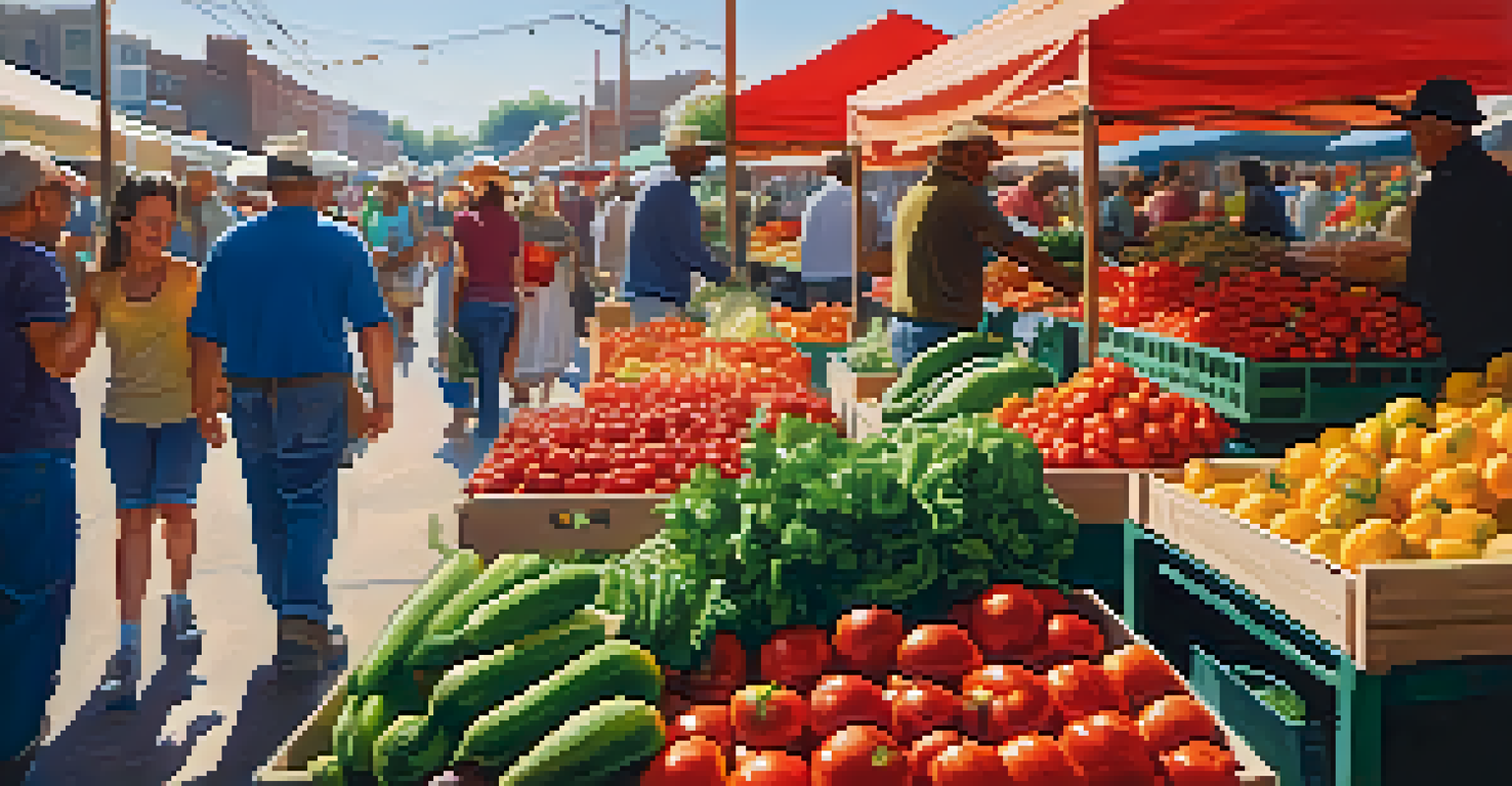How to Select Seasonal Vegetables for Maximum Freshness

Understanding the Benefits of Seasonal Vegetables
Seasonal vegetables are not just fresher; they often taste better and are more nutritious. When produce is in season, it grows naturally in its ideal environment, resulting in enhanced flavor and texture. For instance, ripe tomatoes in summer burst with sweetness, while winter squash offers a hearty, comforting flavor when harvested at the right time.
Eat food, not much, mostly plants.
Eating seasonally also supports local farmers and reduces the carbon footprint associated with transporting food long distances. By purchasing what’s in season, you’re likely buying from nearby farms, which not only boosts the local economy but also means your vegetables have traveled less to reach your plate. Plus, supporting local agriculture fosters a stronger community connection.
Additionally, seasonal eating encourages variety in your diet. Each season brings a new array of vegetables, prompting you to explore different recipes and flavors. This not only keeps meals exciting but also ensures a broader range of nutrients, which is essential for maintaining good health.
Knowing the Best Times for Each Vegetable
To select the freshest vegetables, you need to know when they are in season. For example, leafy greens like spinach and kale thrive in spring and fall, while bell peppers and zucchini are best in summer. Understanding these cycles can help you make informed choices at the grocery store or farmers market.

You can often find seasonal calendars online that outline when various vegetables are at their peak. These calendars take into account regional differences, so they can guide you whether you're in the Midwest or on the West Coast. Knowing what’s in season not only enhances your meals but also aligns your eating habits with nature’s rhythm.
Freshness and Flavor of Seasonals
Seasonal vegetables are fresher, tastier, and more nutritious as they grow in their ideal environments.
Don’t hesitate to ask local farmers about their produce. They can provide firsthand insight into what’s currently being harvested and offer tips on how to prepare their vegetables. This personal connection can lead to discovering new favorites and learning how to enjoy them at their freshest.
Choosing the Right Place to Buy Vegetables
Where you purchase your vegetables can significantly impact their freshness. Farmers markets are often the best choice, as they typically sell produce that was harvested just hours before the market opens. This means you’re likely to get vegetables that are at the peak of freshness and flavor.
The best way to eat is to eat in season, because that is when the food is freshest and most nutritious.
Grocery stores can also offer seasonal vegetables, but it’s important to check labels or ask staff about sourcing. Many stores are increasingly featuring locally-sourced options, so keep an eye out for signs indicating where the produce comes from. When you choose local, you’re likely to enjoy vegetables that are fresher than those shipped from far away.
Online grocery shopping has become popular, and many services now offer local produce delivery. If you prefer this route, look for platforms that prioritize seasonal and local items. This way, you can enjoy the convenience of shopping from home without sacrificing the quality and freshness of your vegetables.
Inspecting Vegetables for Freshness
When selecting vegetables, it’s crucial to know how to inspect them for freshness. Look for vibrant colors and firm textures; dull or wilted vegetables are often past their prime. For example, a fresh bell pepper should feel crisp and have a shiny surface, while a good carrot will snap easily when bent.
Don’t be afraid to give your vegetables a little squeeze! Gently pressing them can reveal their freshness; if they feel mushy or overly soft, they may not be the best choice. Also, check for any signs of blemishes or discoloration, which can indicate spoilage or over-ripeness.
Support Local Farmers
Buying seasonal produce helps local farmers and reduces the carbon footprint associated with transporting food.
Lastly, pay attention to the smell. Fresh vegetables should have a pleasant, earthy aroma. If something smells off or overly sweet, it might be a sign that it’s starting to spoil. Trusting your senses can lead you to the freshest choices available.
Understanding Storage for Maximizing Freshness
After selecting your seasonal vegetables, proper storage is key to maintaining their freshness. Most vegetables should be stored in the refrigerator to keep them crisp, but some, like tomatoes and potatoes, do better at room temperature. Understanding the ideal storage conditions for each vegetable can extend their shelf life significantly.
For leafy greens, consider wrapping them in a damp paper towel and placing them in a breathable container. This helps maintain moisture without causing rot. On the other hand, root vegetables like carrots and beets prefer a cooler, darker environment, making the crisper drawer a perfect spot.
Remember to regularly check your stored vegetables for any signs of spoilage. Removing any spoiled items promptly can prevent the spread of decay to others. By keeping an eye on your produce, you can enjoy delicious, fresh vegetables for longer.
Incorporating Seasonal Vegetables into Your Meals
Once you’ve selected and stored your vegetables, it’s time to incorporate them into your meals. Seasonal vegetables can shine in a variety of dishes, from simple salads to hearty soups. For example, summer squash can be sliced and grilled, while fall root vegetables can be roasted for a comforting side dish.
Experimenting with different cooking methods can also enhance the flavors of seasonal produce. Steaming, sautéing, or even eating them raw can bring out unique tastes and textures. For instance, lightly sautéed greens can add a vibrant touch to pasta, while raw bell peppers can provide a satisfying crunch in a salad.
Maximize Freshness with Storage
Proper storage techniques for seasonal vegetables can significantly extend their freshness and shelf life.
Don’t forget to use herbs and spices that complement the flavors of your vegetables. Fresh basil with tomatoes or thyme with roasted root vegetables can elevate your dishes. The beauty of seasonal eating lies in the endless possibilities of flavor combinations.
Embracing the Joy of Seasonal Eating
Choosing seasonal vegetables is not just about improving freshness; it’s about embracing a lifestyle that values quality, health, and sustainability. Enjoying the best nature has to offer can transform your meals and deepen your connection to the food you eat. Each season brings a unique bounty of produce, inviting you to explore new flavors and recipes.
Sharing seasonal meals with friends and family can also create lasting memories. Whether it’s a summer barbecue featuring fresh corn on the cob or a cozy autumn dinner with roasted squash, these moments are special. Cooking with seasonal ingredients can inspire creativity and bring joy to your kitchen.

So, the next time you’re at the store or farmers market, remember the benefits of selecting seasonal vegetables. Not only will your meals be fresher and tastier, but you’ll also be making a positive impact on your community and the environment. Embrace the rhythm of the seasons, and let your plate celebrate the best of what each time of year has to offer.